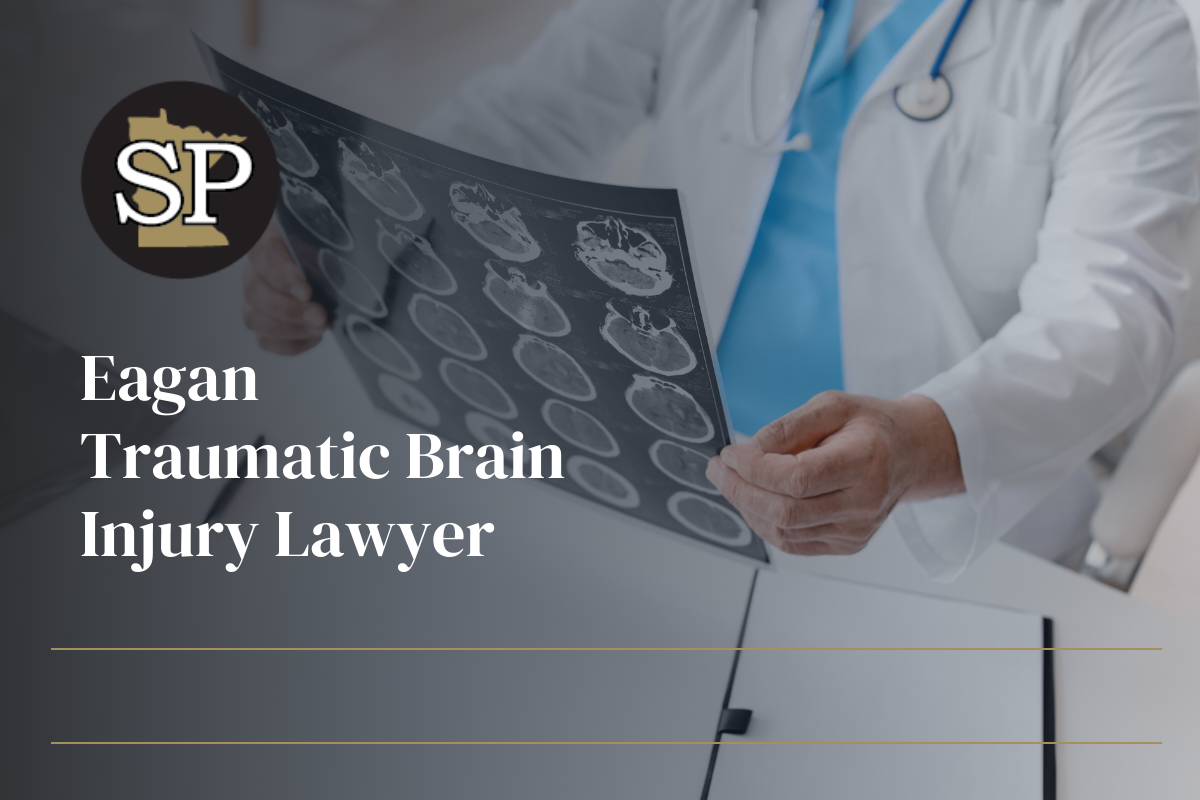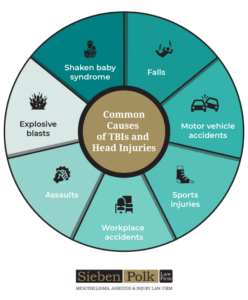Eagan Traumatic Brain Injury Lawyer
More than 100,000 Minnesotans live with a brain injury, and approximately one in four adults with a traumatic brain injury still cannot work one year after their accident. These injuries sometimes result from others’ careless or reckless actions, and victims deserve compensation. Our brain injury lawyers at Sieben Polk P.A. have a long, successful record of helping victims of other’s negligence recover compensation for their economic and non-economic damages

Home » Eagan Traumatic Brain Injury Lawyer
Traumatic Brain Injury Attorneys Serving Minneapolis, MN
Traumatic brain injury victims often face high medical bills, extended periods of lost wages, and physical and emotional pain. They also may need long-term rehabilitation to move forward with their lives.
When brain injuries are someone else’s fault, victims deserve compensation to address the short- and long-term repercussions of their brain damage. Our accomplished brain injury lawyers have a successful history of fighting for compensation against insurance companies who resist paying accident victims what they deserve.
We are a proud Minnesota law firm that combines the advantages of a large firm with the personalized service of a local firm. We have significant experience helping personal injury victims in the Twin Cities area and beyond, collecting millions of dollars in compensation for them.
Why Choose Sieben Polk for Your Brain Injury Lawsuit?
Our brain injury attorneys don’t just love Minnesota and its people. They grew up, attended school, and live here. Partner John P. Sieben, our primary personal injury attorney, has protected Minnesotans’ rights and obtained compensation for them since 1986. Our skilled legal team holds local and national recognition from Super Lawyers, the Minnesota Journal of Law and Politics, and Best Lawyers in America.
We know Minnesota’s legal landscape, including its laws and key players. Our trusted network of experts helps us build solid cases for our clients, and we have the resources to fight insurance companies that protect their bottom line instead of people.
Our attorneys put people first, and many clients kindly post testimonials praising our work ethic, legal knowledge, and tenacity in pursuing compensation.
What Compensation Can Someone Receive From a Traumatic Brain Injury Lawsuit?
Our personal injury attorneys can pursue compensation for financial and non-financial losses resulting from your brain injury. We will thoroughly investigate your claim to determine how you were injured, who is responsible, and the compensation you deserve.
Economic Damages
Economic damages in a brain injury lawsuit may include the following:
- Current and future medical and rehabilitation costs
- Lost wages and future earnings
- Home nursing or other support services
- The cost of modifying your home or vehicle to accommodate your injuries
- Property damage if your brain injury occurred in a motor vehicle accident
- Funeral and burial costs if you file a brain injury wrongful death lawsuit
Non-Economic Damages
You also can pursue damages for the mental health effects of your traumatic brain injury, including the following:
- Pain and suffering
- Emotional distress
- Scarring and disfigurement from head trauma
- Loss of enjoyment of life
- Loss of consortium
Our traumatic brain injury lawyers have significant experience helping victims collect compensation in several practice areas of personal injury law. We use that collective knowledge to evaluate your evidence, calculate your damages, and fight for compensation from all parties liable for your accident.
Our Traumatic Brain Injury Lawyers Are Ready To Help
People with traumatic brain injuries often face significant medical bills, lost earning capacity, an inability to work, and a long road to recovery, both physically and emotionally. When someone else causes those injuries, victims deserve a solid legal team to confront insurance companies and fight for fair compensation. At Sieben Polk P.A., we have a long, successful record of supporting Minnesota accident victims and securing the financial compensation they deserve.
Complete our online form or call 651-437-3148 to schedule a free consultation today. We take personal injury cases on a contingency fee basis, so you don’t pay us unless and until we win.
Traumatic Brain Injury Lawyer FAQs
People often have questions about traumatic brain injuries and the process of pursuing compensation from others. The following are some common questions clients and their families ask our brain injury lawyers.
According to the Minnesota Brain Injury Alliance, traumatic brain injuries often result from motor vehicle crashes, bicycle accidents, and sports concussions. Violent acts, including domestic violence and shaken baby syndrome, also can cause brain injuries. In addition, people who suffer strokes or aneurysms may have a resulting brain injury.
Contact our brain injury lawyers as soon as possible after your or your loved one’s accident. We can immediately start gathering evidence for your claim and determining who is liable for your damages.
A brain injury case typically depends on proving another party’s negligence. To prove negligence, we must show that the defendant owed you a duty of care and breached it, causing your injury and related losses. Some cases are based on vicarious liability, meaning employers are responsible for their employees’ actions while performing their job duties.
In most brain injury cases, Minnesota law gives you six years from the accident date to file suit. If you are suing for a loved one’s wrongful death, you must file within three years of their death. If medical malpractice or a defective product caused your brain injury, you have four years to file your lawsuit.
Yes. Minnesota uses a comparative fault rule, which means you can still recover damages if you were less than 51 percent responsible for your injury. However, your compensation will be reduced in proportion to your share of the fault. For example, if you have $1 million in damages but were 20 percent at fault, you can recover $800,000.
No. We use our 100-plus years of combined experience in personal injury law to try to negotiate fair settlements for our clients. Most cases settle, but we will go to court to fight for compensation if necessary.
Documentation of your injuries and their short- and long-term impacts play a significant role in your case’s outcome. Our accomplished traumatic brain injury attorneys will also investigate your accident’s causes to determine liability. Evidence may include police reports, pictures and videos, eyewitness statements, expert testimony, and other information that bolsters your claim.
It is impossible to know how long a brain injury lawsuit will take until we know your case’s specific circumstances. Some cases settle in a few months. More complex cases with contested liability and conflicting evidence can take multiple rounds of settlement negotiations or prolonged litigation that may take years.
The damages you can recover in a brain injury lawsuit include compensation for future medical bills, rehabilitation costs, and lost earning potential. You also can pursue compensation for future home health care and support services if you cannot care for yourself.

